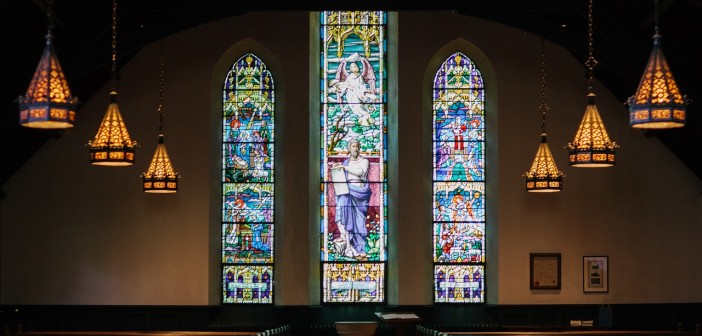The recently released report on shifting religious affiliations among Americans is receiving significant media attention. Prepared by the Pew Forum on Religion and Public Life, the report followed interviews with over 35,000 adults in the United States and gives a detailed picture of what most religious leaders had already assumed.
While a shifting religious economy is not new, the extent of the change appears to be growing. Some contributing factors greater mobility of the population, more religious intermarriage, and a generally more pluralistic and secular cultural ethos.
Such changes are not new in the United States; dramatic shifts in the religious landscape have occurred throughout the nation’s history. In the late 18th century, two-thirds of church members belonged to three denominations — Congregationalist, Episcopal, and Presbyterian. As the 19th century unfolded, Methodists and Baptists emerged in far larger numbers among Protestant church members. And then there has been the movement from the U.S. being a predominantly Protestant nation to the situation today in which Protestants make up about half the population and their percentages continue to decline.
Mainline Protestants such as United Methodists have gained and lost from this religious switching and for the past half century have typically been on the losing end. Earlier Methodists grew as a result of the evangelical zeal with which Methodism spread West and in a relatively brief time went from being one of the smallest religious bodies to being the largest (fifty percent larger than the next size denomination). There was also a period in which mainline churches, as the unofficial established church in the U.S., gained members from upward social mobility as increased education and wealth often led persons into a mainline denomination. That type of movement was generally fading by the end of the 1960s.
While a shifting religious economy is not new, the extent of the change appears from the Pew report to be growing. Some factors contributing to the increased rate of change are greater mobility of the population since the 1940s, more religious intermarriage, and a generally more pluralistic and secular cultural ethos.
What Are the Changes?
As the nation is becoming less Protestant, it is also becoming a more diverse religious nation through the increases in persons representing religions other than Christian and in “the unaffiliated.” The latter are made up of the non-religious, and also those who see themselves as religious but do not align with any religious organization.
Within the Christian community, Catholicism has experienced the greatest net loss through affiliation changes, with about 10 percent of Americans being former Catholics. However, the Catholic share of the population has remained stable due primarily to immigration (Catholics outnumbering Protestants two to one among adults born in other countries) and persons switching to Catholicism (2.6 percent of adults).
In all, 44 percent of adults have changed either the faith or denomination of their childhood, with every major group gaining and losing adherents. Religious groups that are growing are losing people but are attracting new persons to offset losses. By the same token, religious groups are declining not because they are losing people but because they are not attracting new persons to offset the losses.
The statistics of the report make clear whom the mainline denominations are not attracting. The United Methodist figures are illustrative.
Age. Sixty-two percent of persons over 70 are Protestant and only 43 percent of ages 18-29 are Protestant (with 25 percent of this group unaligned). United Methodists are overrepresented in every age category of 50 and above and underrepresented in every age category under age 50, the age of the vast majority of the population.
Race. United Methodists are vastly overrepresented among white people compared to their presence in the population and underrepresented in every other racial group.
Income. United Methodists are overrepresented in all categories of total family income of $50,000 or more and underrepresented in all the income categories below $50,000, a group that makes up just over half the population.
United Methodists are committed to reaching these underrepresented constituencies and are spending considerable funds in the efforts. However, most have not been willing to link such commitments and spending to accountability for outcomes in reaching younger, more diverse, and less affluent disciples.
Do Denominations Matter Anymore?
It would be a mistake to take from this study that denominational traditions and beliefs no longer matter to people. Theology and values are very important, but they are not necessarily the beginning point for choosing a congregation as they might have been previously. The movement today is sometimes described as “belonging before believing.” Persons are seeking first a place where they find a community of belonging that can help them connect with God and others in significant ways. They may not know a great deal about the history and doctrines of the denomination; but over time they come to share those beliefs, even if that was not the primary reason they chose that particular church.
One dimension of switching that the report does not cover is among congregations in the same denominational tradition. People are increasingly attending churches that meet their spiritual needs and give them an opportunity to serve others even if the church is not the closest geographically. It has been reported that 25 percent of Catholics attend a church other than the one located in their geographic parish. Other traditions report similar patterns.
While some congregations work hard to downplay their denominational affiliation, others are thriving with a strong denominational identity. The main issue is whether a congregation is connecting people with God and connecting with its community. If that is not happening, denominational history and doctrines will not be sufficient to save a church. But if such connecting with God and community is taking place, denominational heritage and theology can enhance and strengthen the church’s witness and appeal because the tradition comes alive for the people.
You may view the Pew Forum report at https://religions.pewforum.org/







